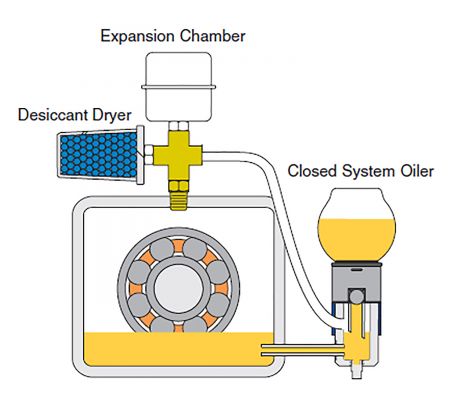
How much water contamination can occur in bearing lubrication oil before degradation occurs?
One of the critical elements of lubrication is quality, and water contamination is a major quality issue that should be monitored. By the time water becomes visible in oil, damage is already occurring to both the oil and the surfaces of the equipment and its components. Each type of oil has its own safe water level before damage can occur; therefore, a uniform parts-per-million (ppm) quantity cannot answer this question.
For example, there are significant differences between oils with mineral and synthetic bases. The temperature plays a major role in absorption, and additive packages can also make a difference in how much water oil can hold before phase separation occurs and free water forms.

Damaging levels of free water begin to occur in some mineral-based oils between 400 and 500 ppm at 60 C (140 F). Free water may form at 200 ppm at 52 C (125 F) in the same oil. The oil supplier can supply the saturation point for a given temperature to aid in determining a set point for effective lubrication maintenance.
A primary cause of water ingress is a pressure differential between the equipment housing and the surrounding atmosphere. When moisture is introduced into the housing, the oil absorbs it at a variable rate depending on temperature, type of oil and lubricant agitation. To limit water ingression, use a closed-system-type constant level oiler and replace the vent with a sealing plug. Some seals are not capable of handling the pressure due to equalization and will require an expansion chamber.
If moisture or water is a known problem, there are various products commercially available to aid in its removal. Desiccant-type dryers remove moisture and change in color once maximum absorption occurs. Filtration is another way of removing water from the oil. Image 1 shows an example of a closed system oiler with an expansion chamber and a desiccant dryer. This type of system in combination with proper bearing housing seals would limit water ingress in oil.

